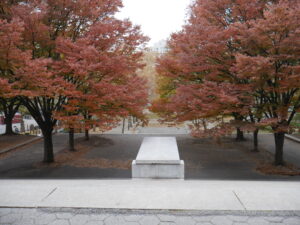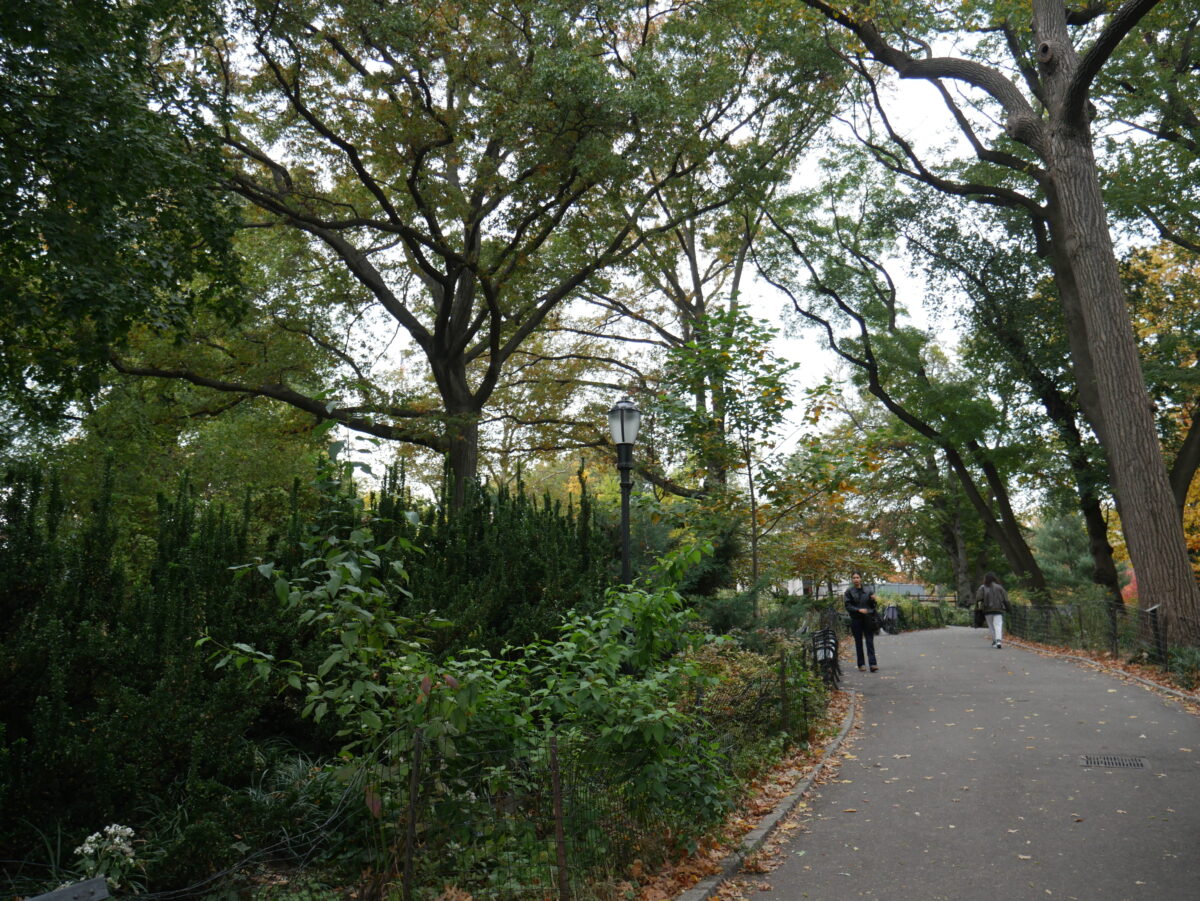Fort Greene Park Redesign Slated to Begin Construction in 2024
By Oona Milliken | omilliken@queensledger.com
Fort Greene Park’s large-scale plan to improve accessibility and remove invasive tree species is moving forward, despite community pushback and two lawsuits.
The capital works plan is back on track to making the park more accessible, renovating the sidewalks and entrance on the northern side of the park, updating the park’s playground, basketball court and outdoor gym as well as preventing flooding. However, the most controversial part of the redesign remains centered around the park’s most treasured asset: trees.
The capital works plan, originally launched in 2017, was held up in court until 2020 after locals sued the Parks Department in 2018 and in 2019 for not sharing internal documents on the health of trees in Fort Greene, as well as avoiding an environmental impact statement. The community has long opposed the plan’s proposal to remove 83 trees, now brought down to 78, in order to pave a plaza at the northwestern entrance.
On Aug. 23, 2023, the Department of Environmental Conservation released a “negative declaration” on the park stating that none of the redesign proposals, including the plaza at the northwestern corner, would have a detrimental environmental impact, thereby allowing the plan to move forward.
On Thursday, Nov. 9, the Fort Greene Conservancy, a non-profit organization that partners with the Parks Department in maintaining the park, hosted a tour of their upcoming capital works plans in order to update community members on the status of the redesign as the plan is set to move forward again. Despite 78 trees being removed, there will be 200 new trees added, though no plan has been formalized on where these trees will be, or what species will be planted. Construction is slated to begin in late 2024.
Sudip Mukherjee, a resident of Fort Greene since 2016, said he attended the tour because he lived facing the park and wanted to know what he would be looking at every day. Mukherjee said he was not opposed to the plan as a whole but did not want any healthy trees removed.

The contested northwestern corner of Fort Greene Park. The area is a part of the Parks Without Borders plan introduced by former Mayor Bill De Blasio. Photo credit: Oona Milliken
“The community is in support of fixing the sidewalk and drainage and everything like that. But it’s not in support of cutting down any trees,” Mukherjee said in an interview. “[The conservancy staff] mentioned 70 plus trees that are being removed. That’s a lot. And more importantly, from the community’s perspective, 58 of those trees are in the northwest corner, and they’re all healthy.”
The northwestern plaza is a part of the Parks Without Borders plan, an initiative introduced by former Mayor Bill de Blasio that sought to remove barriers and fences between park limits and city sidewalks. When the plan was initially released in 2016, community members and residents of Fort Greene were notified of the plan to cut down the trees in the northwestern corner to make room for the cement plaza.
Ling Hsu, President of Friends of Fort Greene, an advocacy group that aims to maintain the canopy of the park, said her neighbors were alarmed by the proposal to remove so many trees at once and decided to take action. According to Hsu and Mukherjee, the Department had originally told the community that the trees were being removed because they were at risk of disease.
In 2017, Friends of Fort Greene submitted a Freedom of Information Law Request on the health of trees in the section of the park and found that 49 out of 58 trees in the northwestern corner were being removed for design purposes, not safety or health reasons. Hsu said the information from the FOIL request was what prompted the subsequent lawsuit in 2018 to get more information from the Parks Department.
“First, we were wondering how come the trees on the corner are dying, because they look fine to us. We FOIL’d the internal tree reports from the Parks Department. It took six or nine months to get the information, and shockingly, the tree report from the Department said most trees are healthy,” Hsu said. “We were seriously shocked by the discovery, so we got a pro-bono attorney Michael Gruen and started to demand even more information about the project.”
Hsu said she was disappointed in the way that the Parks Department has handled the redesign and wishes that the Department would work more closely with the community in reimagining the northwestern corner.
“To be honest, this plaza design proposal feels like it was done by people who don’t live here and have no clue how residents use the park or by people who know, and simply don’t care about the well-being of our neighbors and the environment,” Hsu said.
Rosamund Fletcher, the Executive Director of the Conservancy, said the Parks Without Borders initiative was an opportunity to break down obstacles between the park and the community. In an interview with Fletcher and Shakara Petteway, Director of Park Projects and Programs, Fletcher said there was a lot of misinformation about the capital works plan swirling around the community that she wishes to clear up. Aside from their capital works tour, the conservancy is hosting virtual office hours throughout the month of November to communicate with Fort Greene residents.
“Our main point is that we want everyone to look at our website and look at the actual plans, talk to us and come on our tour. It’s very hard to look at a single rendering or a single plan and understand the scope and scale of this project,” Fletcher said. “It’s definitely not a situation where the many trees that people love in the park, the alley of trees, the trees over the barbecue area, all those beautiful London plane trees, those are not coming down. And I think a lot of people think they are. That’s what I would like them to understand.”
Though 58 trees are set to be removed in the northwestern corner, it is unclear how many will replace them. According to Fletcher and Petteway, a little under half of the trees are invasive species and are being removed due to their impact on neighboring trees. However, without the final plan from the Parks Department, Fletcher said she cannot give a final answer on what the finished treescape will look like.
Note: this article is edited from a version that appeared in print on Thursday, November 11, 2023.


